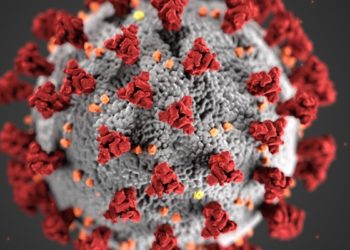Periarticular liposomal bupivacaine comparable to bupivacaine hydrochloride alone
1. Among patients undergoing knee replacement, there was no difference in postoperative recovery or pain associated with the use of periarticular liposomal bupivacaine compared with bupivacaine hydrochloride alone.
Evidence Rating Level: 1 (Excellent)
Study Rundown: Knee replacement surgery is a common and successful operation for patients with advanced arthritis. However, recovery from surgery poses a challenge as it can be painful despite multi-modal pain management techniques. Increased pain is reported to be associated with increased morbidity and mortality. A locally delivered analgesic that provides long-lasting sensory block and avoids systemic effects would be ideal. Liposomal bupivacaine is one such local anesthetic developed to improve postoperative analgesia and reduce need for supplementary opiates. However, current evidence is inconclusive due to limited small studies without sound methodologies. Therefore, this randomized-controlled trial sought to assess the clinical efficacy and cost-effectiveness of liposomal bupivacaine plus bupivacaine hydrochloride compared with bupivacaine hydrochloride alone for postoperative recovery after knee replacement.
This was a randomized, patient-blinded, active-comparator-controlled, superiority trial conducted across 11 institutions in the United Kingdom. Eligible participants were adults who underwent unilateral primary total knee replacement (TKR) or unicompartmental knee replacement (UKR). 533 participants were randomized 1:1 into the intervention and control groups. The intervention group received 266mg of liposomal bupivacaine admixed with 100mg of bupivacaine hydrochloride without epinephrine. The control group received 100mg of bupivacaine hydrochloride without epinephrine. The primary outcomes measured were the Quality of Recovery 40 (QoR-40) score at 72 hours and pain visual analog scale (VAS) score from 6 to 72 hours after surgery. The study found that there was no difference between the control and intervention groups in QoR-40 score at 72 hours or the pain VAS score at 6 to 72 hours. The secondary outcomes measured were the QoR-40 and VAS scores at days 0 (evening of surgery), 1, 2, and 3; cumulative opioid consumption; functional outcomes measured using the Oxford Knee Score and American Knee Society Score; quality of life measured using the 5-level EQ-5D (EQ-5D-5L); use of health care resources; and complications measured using the Clavien-Dindo classification. There were no statistically significant differences found in any of the secondary outcomes, except for pain VAS score at 6 hours after surgery which was in favor of liposomal bupivacaine. Therefore, the study concluded no difference in postoperative recovery or pain between the control and intervention groups post-surgery.
One of the greatest strengths of this study is the methodology. It was one of the first large randomized-controlled trial to investigate this clinical question, thus filling a significant gap in the literature surrounding post-operative recovery. Additionally, it was well designed to improve internal validity of the experiment. For example, randomization was stratified according to recruitment site and type of surgery (TKR or UKR). The sample size of patients from 11 different centres also improves external validity of this study. Additionally, there were limited withdrawals (23 participants), with similar numbers withdrawing from the two treatment groups. Despite these strengths, the study does have some limitations. For instance, the study did not analyze any other confounders of the results (such as co-morbidities and ethnicity). Additionally, the study did not follow the participants for an extended period to assess some of the long-term outcomes. Therefore, future larger-scale studies should focus on evaluating confounders of recovery along with assessing long-term outcome of this intervention.
Click to read the study in JAMA Surgery
Relevant Reading: Liposomal bupivacaine infiltration at the surgical site for the management of postoperative pain
In-Depth [randomized controlled trial]: A total of 533 participants were randomized, with 267 in the intervention arm and 266 in the control arm. The mean (SD) age of participants was 69.0 (9.7) years, and 287 participants were women (53.8%). For the primary outcome, the adjusted mean difference for the QoR-40 scores was 0.54 (97.5% CI, -2.05 to 3.13; p = 0.64) and the adjusted mean difference for VAS pain score at 6 to 72 hours was -21.5 (97.5% CI, -46.8 to 3.8; p = 0.06). Based on significance level of 0.025, the study concluded no statistically significant differences between the two groups. There was no statistically significant difference for the QoR-40 score at any follow-up time point. For pain VAS score at 6 hours after surgery, the study reported a statistically significant difference in favour of the treatment group (adjusted difference, -0.54 [97.5% CI, -1.07 to -0.02; p = 0.02]). All other time points demonstrated no statistically significant difference. There were also no statistically significant differences found in any of the other secondary outcomes measured. \
Image: PD
©2022 2 Minute Medicine, Inc. All rights reserved. No works may be reproduced without expressed written consent from 2 Minute Medicine, Inc. Inquire about licensing here. No article should be construed as medical advice and is not intended as such by the authors or by 2 Minute Medicine, Inc.







